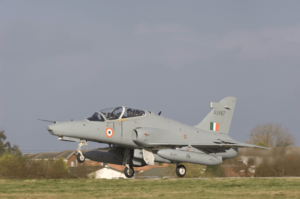DRAG – What comes to your mind when you hear the term- Resistance to motion? Let’s explore in more detail what Drag is! May the drag force be with you.
What is Drag?
The aerodynamic force that opposes the motion of an aircraft through the air is known as Drag. It is a resistance force that opposes the motion of an object through a fluid. It always acts in the direction opposite to the motion of an object as shown below. Drag is also one of the four forces acting on an airplane in straight and level flight.

The drag force D exerted on a body by a fluid is given by-
D = (1/2)ρAv^(2)Cd
or
D ∝ v^(2)
Cd – the coefficient of drag,
ρ – the density of the fluid through which the object is moving,
v – the speed of the object relative to the fluid.
A – the cross-sectional area of the object perpendicular to the flow.
D – Drag Force
Drag is proportional to the speed of the moving object and it is a mechanical force and a vector quantity having both a direction and a magnitude. It depends on the shape, speed, and size of the object and the properties of the fluid it is passing through.
How is drag generated?
Drag is generated when a body comes in contact with a fluid and there is a motion between them, if there is no fluid & no motion, there is no drag. It is also generated because of the difference in velocity between the object and the fluid.
The total drag comprises parasite drag, induced drag, wave drag, and ram drag.
Parasite drag– It comprises all drag forces that affect the motion of an aircraft. Parasite drag can be classified into 3 different types: Form drag, Interference drag, and Skin friction.

- Form Drag also known as pressure drag is due to pressure imbalance caused by the separated flow. It primarily depends on the shape of the object and hence known as form drag. It can be reduced by streamlining as many parts as possible and also by reducing the frontal area so that flow remains laminar.
- Interference Drag is caused due to the mixing of airflow streamlines between aircraft components. For example, between wing and fuselage at the wing root, between pylon and nacelle, etc. Interference drag can be reduced by using fairings.

- Skin Friction Drag is due to the resistance force exerted by the fluid against the surface of an object. The amount of skin friction drag depends on the properties of both solid and gas which means it directly depends on the area of the surface in contact with the fluid. The effects of skin friction drag can be reduced by keeping the surface of the airplane clean and waxed, using flush mount rivets, and remove irregularities that may protrude above the surface.
Induced Drag– It is defined as the drag caused due to the lift. Induced drag occurs because the lift is not distributed uniformly on a wing, but varies from root to tip. The Lift is generated because of the pressure difference between the upper and lower surfaces of the wing. Vortices are formed at the wingtips, which produce a swirling flow that is very strong near the wingtips and decreases toward the wing root which gives an additional downstream-facing component of the aerodynamic force acting on the wing. This force is called induced drag.
Induced drag is reduced by increasing the span and reducing the chord, hence high aspect ratio wings have lower induced drag than wings with low aspect ratio.

Wave Drag – it is caused due to the shock wave formation in supersonic and transonic flow regimes where the speed of the object becomes equal or sometimes exceeds the speed of sound. Wave drag can be minimized by using supercritical airfoils or by the usage of ultra-thin wings, wing sweep, etc.

Ram Drag – It is associated with the inlet conditions of the gas turbine. It is generally produced in a turbojet or turbofan engine when free stream air enters the aircraft.
Ram drag can be expressed as -Ram drag=gross thrust -net thrust.
It is reduced by minimizing inlet leakages and inlet bleed and also by bifurcated ducting in a common inlet which reduces the turbulence in the flow of air into the compressor to obtain maximum efficiency.
* The information provided herein is, to the best of our knowledge and is only for informative purpose. If you have a news update or correction, let us know at -info@garudauniverse.com




